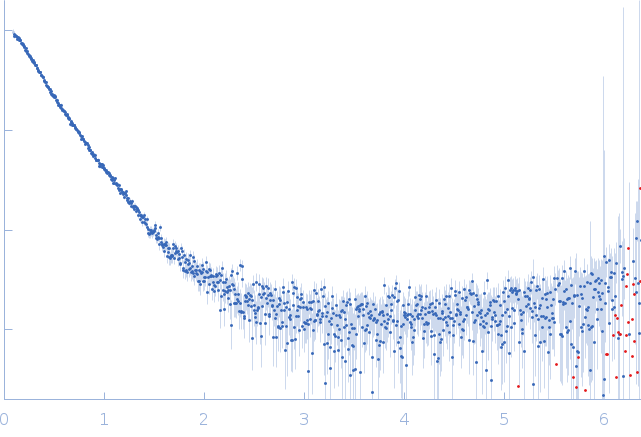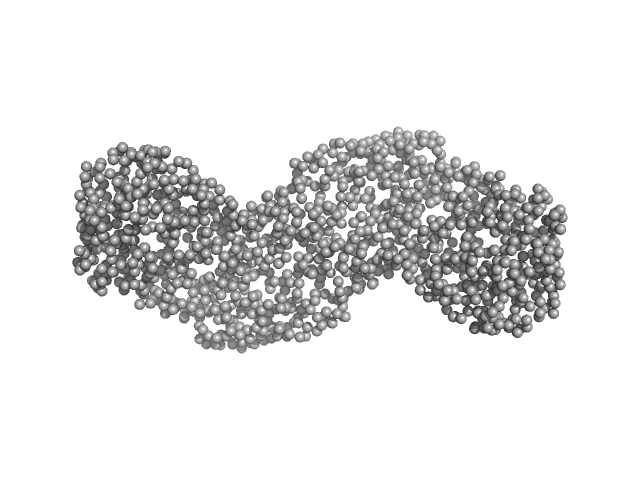|
SAXS data from solutions of mouse guanylate-binding protein 7 (mGBP7) in 50 mM Tris, 5 mM MgCl, 2 mM DTT, pH 8 were collected using a Xenocs Xeuss 2.0 Q-Xoom instrument (Center for Structural Studies, Heinrich-Heine-University, Düsseldorf Germany) equipped with a Pilatus3 R 300K detector at a sample-detector distance of 0.6 m and at a wavelength of λ = 0.154 nm (I(s) vs s, where s = 4πsinθ/λ, and 2θ is the scattering angle). Solute concentrations ranging between 1.7 and 6.9 mg/ml were measured at 10°C. Six successive 600 second frames were collected. The data were normalized to the intensity of the transmitted beam and radially averaged; the scattering of the solvent-blank was subtracted. The low angle data collected at lower concentration were merged with the highest concentration high angle data to yield the final composite scattering curve.
|
|
 s, nm-1
s, nm-1
